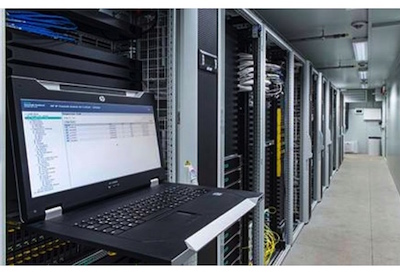5 Interesting Data Centre Trends

Feb 26, 2019
Rittal has outlined five trends for cloud computing and data centres that IT managers should have on their agenda.
Trend 1: data centres will acquire greater AI-based monitoring capabilities
IT data centre specialists will require assistance systems featuring artificial intelligence (AI), or they will soon find it impossible to operate large and complex IT systems in a fail-safe way.
According to the IDC, by 2022, half the components within large data centres will include integrated AI functions and therefore be operating autonomously. Essentially this means that administrators will be reliant on predictive analytics and machine learning — designed to provide predictive fault forecasts and support optimized load balancing — to ensure maximum reliability of their data centres.
Trend 2: processing the flood of data in real time with edge computing
We’re on the cusp of the roll-out of the 5G mobile communications network. The many transmission masts this requires means that the mobile communications infrastructure will have to be expanded through edge data centres.
It will also increase the amount of data that network operators and other companies have to process. CB Insights forecasts that every user will generate an average of 1.5 GB of data per day with an internet-enabled device by 2020.
Decentralizing IT infrastructure through edge data centres means data can be processed at source, leading to low latency and enabling real-time applications for the control of industrial robots or autonomous vehicle systems. Edge data centres are connected to the cloud to deliver additional data analysis.
Essentially, businesses now need to examine how to expand their IT capacities flexibly over the next couple of years and how to evaluate edge concepts with this in mind.
The general trend towards standardization is another key factor in achieving the fast deployment time and scalability that the market is demanding from data centres.
Trend 3: the cloud market will benefit from hyperscale data centres
Acceptance of the cloud continues to grow, and is particularly prevalent across mechanical and plant engineering.
At the same time, investments in hyperscale data centres are increasing globally, an indication of the further spread of the cloud as an operating model.
Researchers at Synergy Reach expect that there will be more than 600 hyperscale data centres worldwide by 2020; currently, the number stands at around 450.
It’s why Rittal recommends that IT managers now consider how to balance their on-site edge (or core) data centre and cloud resources, to optimally support application hosting and high availability in line with their corporate strategy.
Trend 4: optimized technologies will increase energy efficiency
Alongside high availability, energy efficiency is seen as the second most important management issue when it comes to operating a data centre.
The energy efficiency of new data centres has improved by roughly 60% over the last decade, according to the Borderstep Institute. At the same time, however, energy requirements have continued to rise as IT capacities have grown.
For data centre managers, optimizing the energy usage of their entire data centre should be the number one priority in the coming year. Hybrid cooling units that integrate free cooling with refrigerant-based cooling are one example of new approaches to cost optimization.
Trend 5: The Nordic countries’ locations will help to cut costs
The Nordic region has become an attractive location for cloud and co-location providers.
Countries such as Denmark, Finland, Iceland, Norway and Sweden offer renewable energy sources, a climate favourable to data centres, very good internet connections, and a high level of political and economic stability. Analysts expect the turnover of data centres in the region to grow by 8% per year until 2023. One famous example is Norway’s Lefdal Mine Datacenter (LMD) with whom Rittal is a strategic and technological partner.
LMD sources its electrical power entirely from renewables while the cooling system uses local sea water. As a result, the facility achieves a power usage effectiveness (PUE) of 1.15 and operating costs for customers are low.
“Alongside the trend toward greater standardization, we will see companies expanding their IT infrastructure in a more decentralized way in 2019. This will support the digital initiatives that now form an integral part of a successful corporate strategy.
“One way of doing this is through edge data centres, which can be put into operation very quickly and on the company’s premises as IT containers for instance, and which thus support the digital transformation in all branches of industry.
“Rittal is offering an array of solutions for edge infrastructures, ranging from rack solutions to turnkey IT containers with cloud connections,” says Andreas Keiger, Executive Vice President of the Rittal Global Business Unit IT.
This white paper was first published online by Rittal. Find out more at www.rittal.com/ca-en/content/en/start/
















